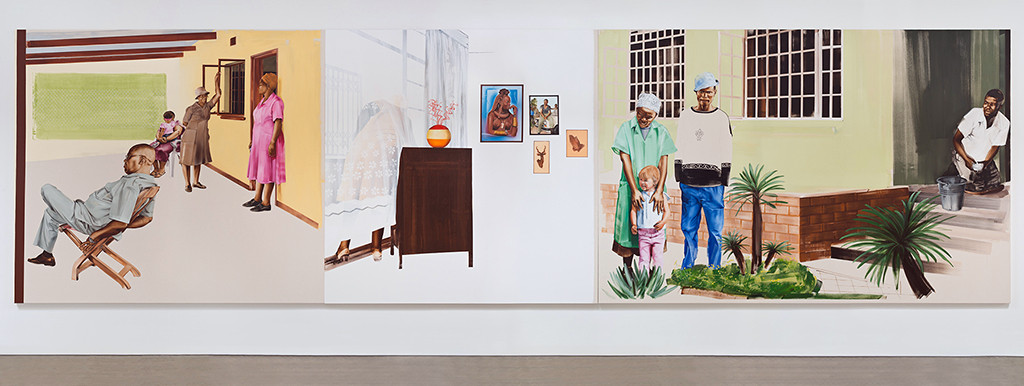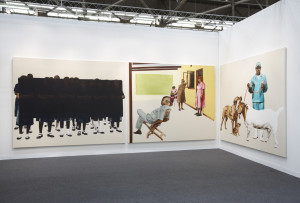
Fully Belly, 2014.
About:
Fully Belly II, 2014.
What is most pleasing about Meleko Mokgosi’s work is also what many find elusive in contemporary artwork, the combination of both technical mastery and thought provoking concept. Even as I look at his works as images on a screen, removed from the objects themselves, the rich colors, skillful draftsmanship, and inventive use of space are readily apparent. Mokgosi’s art is immersed in specific historical events that carry regional, national, and global significance. The paintings in his ongoing Pax Kaffraria series interrogate colonialism, politics, power, and identity in Botswana and Southern Africa.
 Graase Mans, 2014.
Graase Mans, 2014.
Mokgosi’s monumental installations, which occupy vast walls and sometimes whole alcoves, allow the viewer to be engulfed by the experience of viewing much like at the cinema, or theatre. But unlike them, these still performances require an active viewer, and it is the artist’s work behind the canvas that provides us with the structure from which to draw our own conclusions from, conclusions that become less concrete and tailored the more we actively engage the work. Mokgosi’s use of the familiar language of cinema in his paintings (e.g. storyline, framing, fade-ins, movement through time) provides his viewers with the tools to begin their own dialogue with his art, reacting to the canvass’s physical presence, from which they can gather perceptions, share experiences, and learn through its sensory cues. (from Africaisacountry, April 28, 2014)
 Terra Pericolosa, 2013.
Terra Pericolosa, 2013.
 Terra Nullius, 2012.
Terra Nullius, 2012.
Courtesy: Jack Shainman Gallery New York

